The Importance of Critical Thinking in Geography, by Andrea Wood
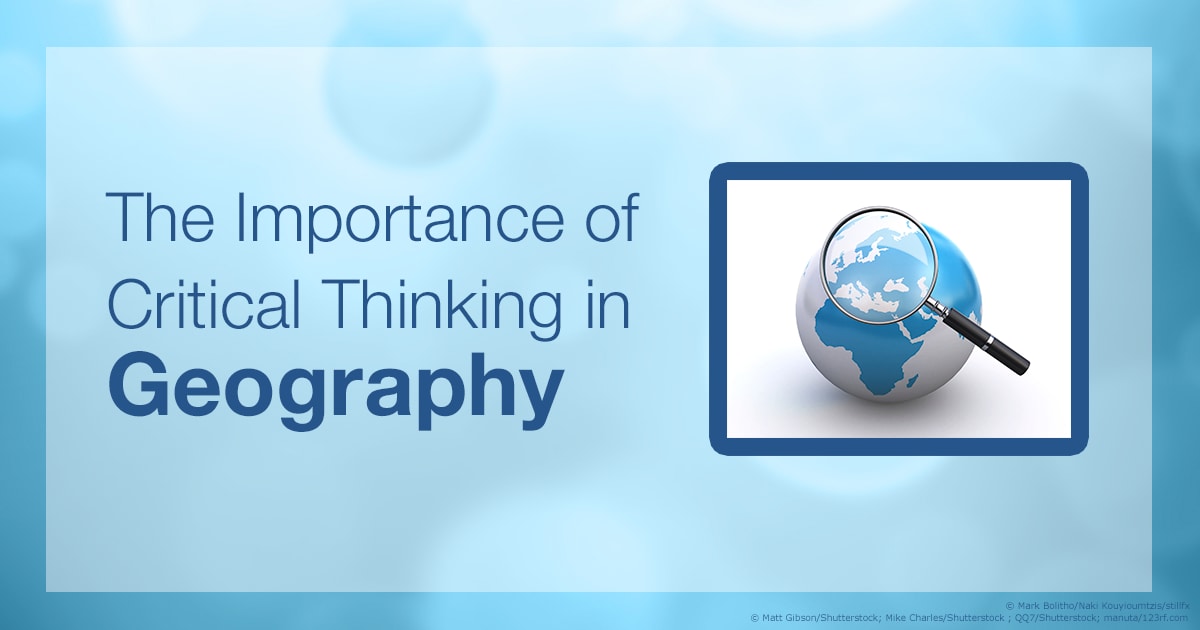
At the Geographical Association (GA) conference in April 2019, Pearson polled geography teachers to find out what they felt was the most important skill their students would need in the future to be successful. The results clearly show that ‘critical thinking’ is the most important key skill that their students will need in the future to be successful. As a result of this poll Pearson asked me to share my thoughts about critical thinking and to provide some tips and tricks to help develop high-order thinking skills.
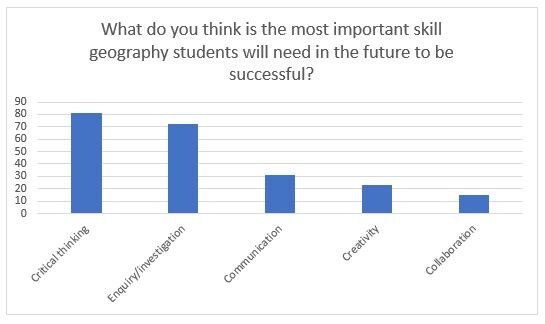
So what is critical thinking?
There are many definitions of what critical thinking is. These can be summed up to say that critical thinking is the ability to analyse facts, to think clearly and rationally to understand the logical connections between ideas and to use this ability to reason and make informed judgements. Students need to be active learners, rather than passive recipients of information, and to engage in reflective and independent thinking. It is high-order thinking.
If you look at the new geography 9–1 assessment objectives, you can see that the new AO3 descriptor matches many of the attributes of critical thinking outlined above. With 35 per cent of all the marks on exam papers being given for AO3, it is not surprising that teachers have voted this skill as being so vital for success in geography.
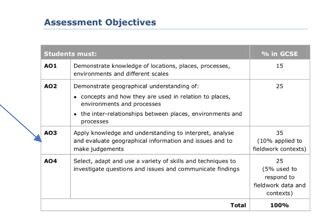
Figure source: Pearson Edexcel GCSE Geography (9–1) 2018 Specification A and Specification B
How can we help students to develop high-order thinking skills?
In order to prepare students for exams and for a future where they will increasingly have to work with information, teachers will need to develop critical thinking skills in lessons. This may well involve looking at how time is spent in lessons and making sure that enough curriculum time is given to these high-order thinking skills. Lessons where students collect and receive information, often in a passive way and using only low-order skills, may need to be transformed into lessons where students are more active learners and are challenged with high-order thinking skills.
After two series of the new 9–1 exams, teachers and students should now be aware of the need to be able to handle an unseen resource in exams. Geographical resources, such as photos, graphs, maps, text and satellite images are used in many questions in exams. These resources are crucial parts of the exam questions. It is therefore important that students are prepared for these types of resource-based questions by handling geographical resources on a regular basis in lessons.
When faced with an unseen resource, students need to think critically about the information being shown. Take for example the information shown in the exam question below from the 2018 Spec B Paper 2 Q10d, when students were asked to ‘Assess the evidence for the conclusion that social, economic and environmental conditions in the urban area has improved since 2014’ (eight marks). This requires students to use geographical skills to unpick and analyse the information in the graph, this would allow students to access the AO4 (geographical skills) four marks, but what is vital is that students question how this information was obtained and how accurate and reliable this information is. The text above the graph tells students about this and to obtain the four AO3 marks this must be considered. The fact that this data was collected on a Wednesday afternoon and that only 40 residents were selected at random to question should make students think about the reliability of the information being shown and conclusions made and this would need to be discussed.
Students should approach information like this critically, as this states it was done by students so is likely to be intentionally flawed and examiners are looking for students to be able to identify and discuss this.
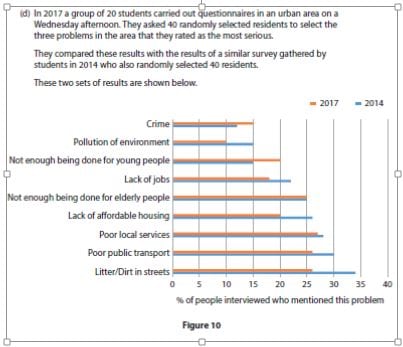
Figure source: Pearson Edexcel GCSE Geography (9-1) 2018 Specification B, Paper 2 Q10d
Tips for extended writing in exams
With more extended writing in exams, which will always have half the marks assessing AO3, it is vital students have the confidence to be critical about the information they are faced with and that they have studied in their case studies.
Students find these types of questions most challenging and, therefore, need plenty of time and support to develop the skills and confidence to tackle them. It is important for teachers to spend sufficient time in lessons developing these high-order thinking skills.
Homework tasks could be used for the low-order tasks of collecting and finding out the information and class time spent grappling with the big questions and high-order skills.
Once the knowledge is secure and mastered, teachers can support students by structuring the thinking skills by doing activities like diamond ranking and De Bono’s Thinking Hats and then giving students a framework and the vocabulary needed to attempt the questions. Modelling how these big questions should be done is also a good idea, using high-scoring responses from previous exams. As students progress through their GCSE course, they should become more confident to use the support frameworks less as they develop the skills needed.
Examples of activities that help develop Critical Thinking
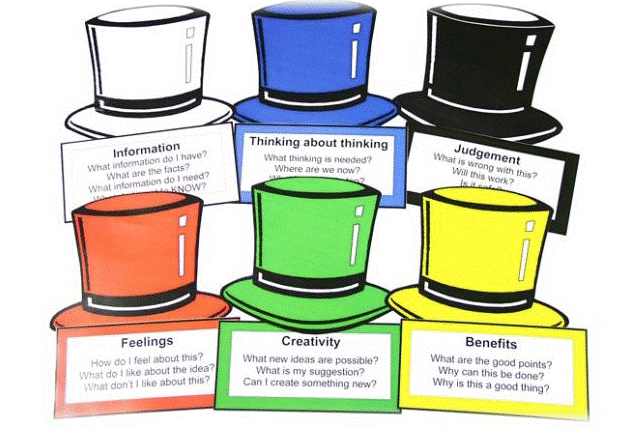
Image source: Helen Brown 2014/11/26/six_thinking_hats
De Bono’s Thinking Hats
When faced with an issue or decision, students can be trained to think around the issue using different ‘hats’.
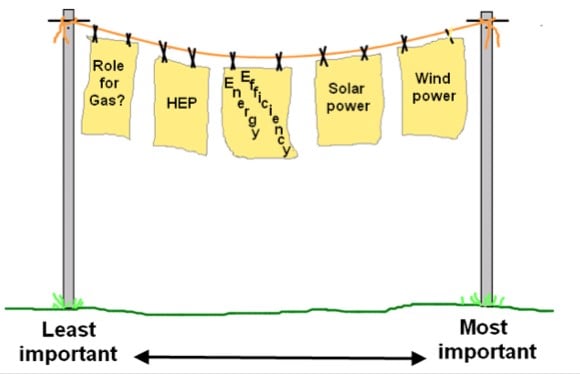
Image source: Edexcel GCSE Spec A Assessment guide
Ranking
When assessing a geography issue, students can rank their ideas on a washing line and then justify their choices.
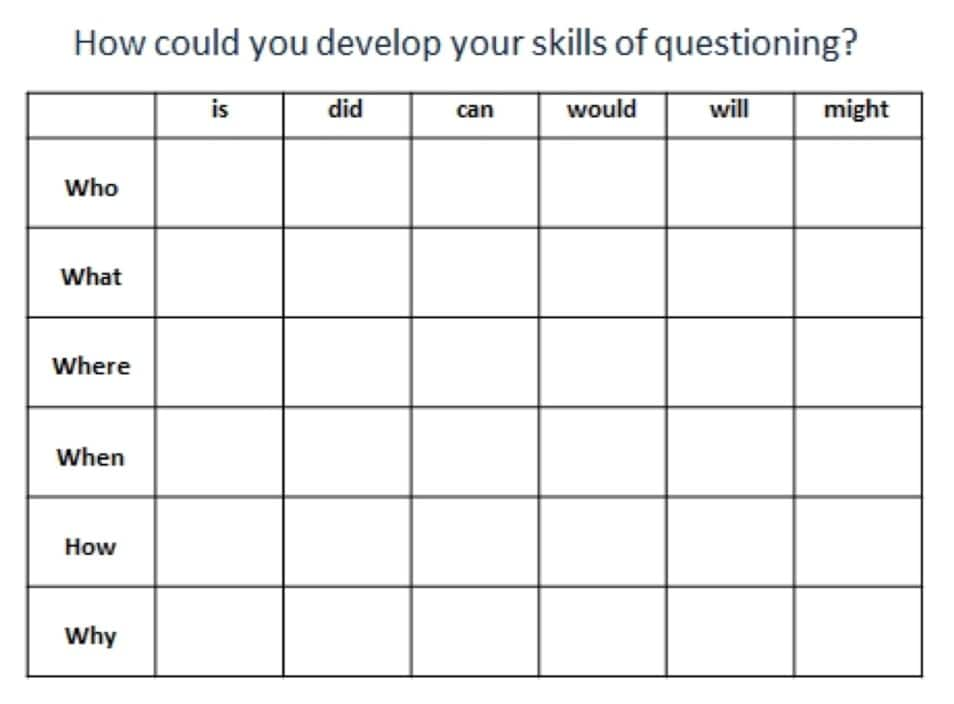
Image source: Geographical Association online Teaching Resource
Questioning Grid
When faced with an unfamiliar resource, students could be trained to question the information by devising questions using the grid.
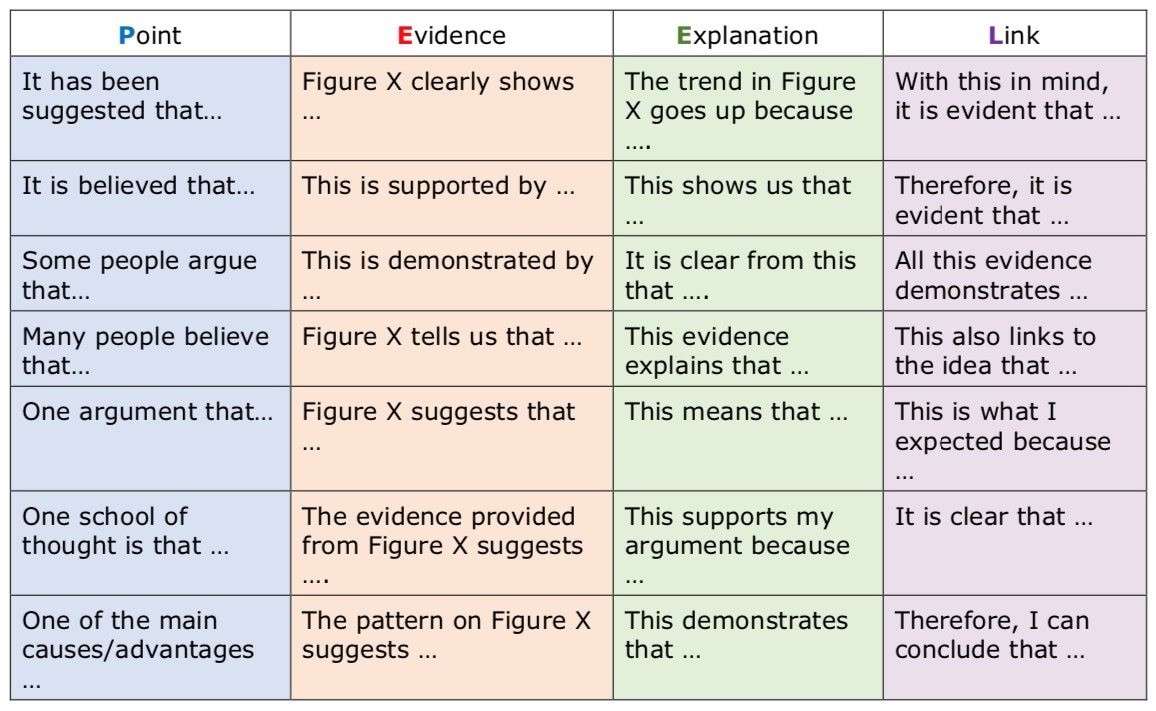
Image source: Pearson Edexcel Assessment Guide for GCSE (9–1) Geography B and Pearson Edexcel Assessment Guide for GCSE (9–1) Geography A
PEEL writing frame
The PEEL writing frame can be useful to help support students with their extended writing.
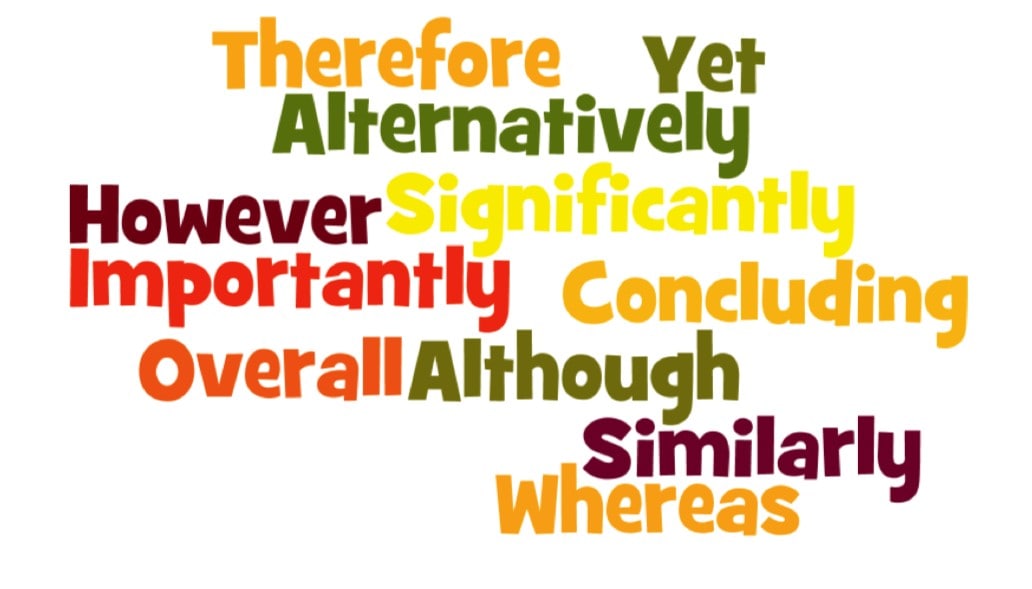
Image source: Pearson Edexcel Assessment Guide for GCSE (9–1) Geography B and Pearson Edexcel Assessment Guide for GCSE (9–1) Geography A
Useful vocabulary
Supporting students with the vocabulary needed to write in an evaluative way is important.
Tips for preparing students for unfamiliar fieldwork exam questions
Fieldwork is now assessed in the exams at GCSE and the exam questions will always assess just AO4 geographical skills and AO3. Students will be asked about the fieldwork they have undertaken and they will be required to answer questions on an unfamiliar fieldwork scenario.
In both cases, students will need to be confident to be critical and write evaluatively about their own fieldwork methods and conclusion, and about the methods, data and conclusions presented.
An understanding of, and the ability to identify, the fact that many of the methods used for GCSE fieldwork will have limitations and will often cause data to be inaccurate or unreliable is essential.
The ability to think critically and question things is, therefore, an important element of preparing students for the fieldwork element of exams.
Final thoughts
To be successful in geography, students need to be given the tools to think critically about geographical issues, which in most cases don’t have one single solution.
As geography is a real subject and the things studied are real issues facing the world today, we need to equip students with the skills necessary to go out into a world where they will be faced with data and information to process on a daily basis.
As geography teachers, we need to cultivate the students who arrive in our classrooms, so that they develop the key attributes to become critical thinkers; to be curious and have a desire to learn more and seek out evidence as well as being open to new ideas; to have a healthy scepticism and questioning attitude about information they are presented with; and to be humble enough to accept that their ideas and opinions may not always be right when they are faced with new information.
About the author: Andrea Wood was a teacher for many years, having roles as an AST and Head of Faculty. Recently, Andrea has taken up a role as an Associate Tutor at Edge Hill University on the PGCE Geography course and has been heavily involved in the writing and delivery of the online and face-to-face training for the new GCSE and A level Pearson specifications. Andrea has contributed to the writing of support materials for the new Pearson Edexcel GCSE Geography qualifications and was an author for the Pearson paid-for resources. She is currently the Assistant Principal examiner for the Pearson Geography B Paper 2 and an ATE officer for Pearson GCSE Geography. Alongside this, Andrea is a freelance Geography consultant and teaching and learning trainer.